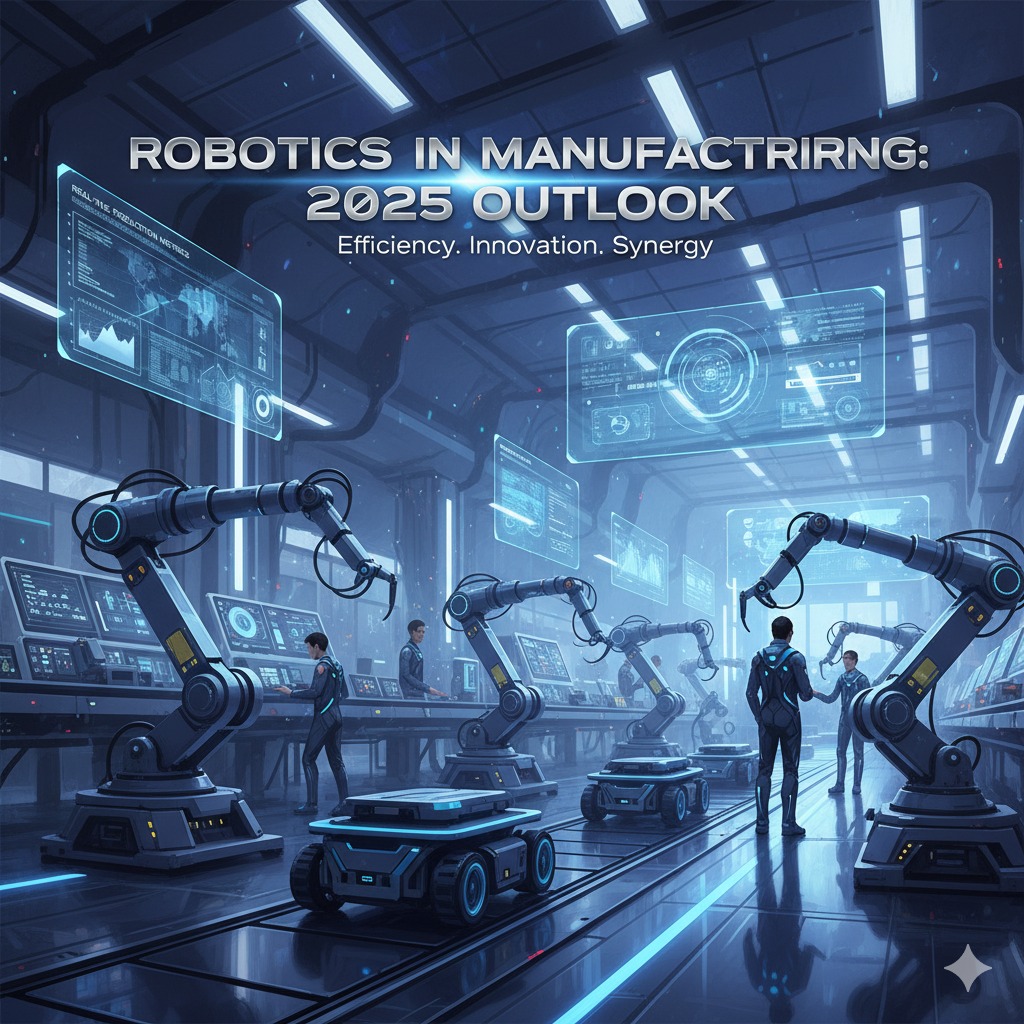
Robotics in Manufacturing: 2025 Outlook
Mục lục 1 Robotics in Manufacturing: 2025 Outlook – The Dawn of Hyper-Automation 1 1....
For what felt like an eternity the phrase “semiconductor shortage” echoed through boardrooms and living rooms alike dictating everything from smartphone availability to new car prices. It was a global bottleneck that reshaped industries and consumer expectations. But as we navigate deeper into a new economic landscape a pivotal question arises a question brimming with cautious optimism: Is the silicon drought finally over? The answer as always with complex global supply chains is nuanced but compelling signs point towards significant relief and a recalibration of the tech world’s most vital artery.
To appreciate the current trajectory we must first recall the crucible of the crisis. Beginning in late 2020 and intensifying through 2021 and 2022 the world faced an unprecedented scarcity of microchips. The catalysts were a perfect storm of converging factors. The sudden surge in demand for electronics driven by global lockdowns and remote work/learning created an insatiable appetite for devices from laptops and webcams to gaming consoles and home office equipment. Simultaneously the highly efficient just-in-time manufacturing model prevalent in the industry proved fragile easily disrupted by localized factory shutdowns port congestion and logistical nightmares. Geopolitical tensions trade disputes and even unforeseen events like a factory fire at Renesas further exacerbated the situation exposing the delicate interdependencies of the global supply chain. Industries like automotive were particularly hard hit with factories idling and vehicle production plummeting due to the lack of essential legacy chips. It was a stark reminder of silicon’s foundational role in modern society.
Today the narrative is shifting. Several key indicators suggest that the worst of the semiconductor shortage is indeed behind us for many sectors. One of the most telling signs is the build-up of inventory levels. After years of scrambling for every available chip manufacturers are now seeing inventories normalize and in some cases even swell. This is particularly evident in segments like memory chips (DRAM and NAND) where spot prices have seen significant declines indicating an oversupply. Lead times the duration between ordering a chip and receiving it have also improved considerably for many component types. While still elevated compared to pre-pandemic levels for certain specialized chips the overall trend is downward. Major foundry players like TSMC Intel and Samsung have been aggressively expanding their production capacities with new fabrication plants (Fabs) coming online or nearing completion globally a massive capital investment aimed at preventing future bottlenecks. These expansions though taking years to materialize are now beginning to yield fruit contributing to increased output. Furthermore demand for consumer electronics particularly smartphones and PCs has somewhat softened from its pandemic peak further alleviating pressure on the supply chain.
While the overall outlook is brighter it’s crucial to understand that the recovery isn’t uniform. The semiconductor landscape is incredibly diverse and challenges persist in specific niches. For instance while high-volume chips for general consumer electronics might be readily available certain specialized or legacy chips often found in industries like automotive industrial control systems and defense still face longer lead times. These chips might use older fabrication processes which are less profitable for leading foundries to expand aggressively compared to cutting-edge nodes. The transition to more advanced process technologies like those used for AI accelerators and high-performance computing (HPC) also continues to be a tightly constrained area. Demand for these sophisticated chips remains robust driven by the explosion of artificial intelligence and data centers creating new points of potential scarcity even as other segments ease. Therefore declaring the shortage “completely over” would be an oversimplification; rather it’s an ongoing rebalancing act with pockets of constraint still present.
The lessons learned from the shortage have profoundly impacted national and corporate strategies. The era of relying solely on a geographically concentrated supply chain particularly in Asia is giving way to a push for “chip sovereignty” and supply chain diversification. Governments worldwide are pouring billions into incentivizing domestic chip manufacturing. The US CHIPS and Science Act and the EU Chips Act are prime examples aiming to reshore significant portions of chip production to their respective regions. While these initiatives promise greater resiliency they also introduce new complexities including higher production costs and the potential for overcapacity in the long term if not carefully managed. Companies are also actively “de-risking” their supply chains by dual-sourcing components stockpiling critical parts and collaborating more closely with their suppliers. This fundamental shift towards regionalization and redundancy is a direct consequence of the crisis aiming to build more robust and less vulnerable supply networks for the future.
The easing of the shortage also coincides with a challenging global economic environment. Rising inflation higher interest rates and a general economic slowdown are impacting consumer spending and business investment. This economic deceleration has somewhat tempered the explosive demand seen during the pandemic providing further relief to the chip supply. However it also introduces new uncertainties. A significant downturn could lead to an oversupply in certain chip segments particularly if new fabrication capacity comes online at a faster rate than demand materializes. We are seeing a shift in demand patterns too. While consumer electronics growth might be moderating sectors like automotive industrial IoT and cloud computing infrastructure continue to exhibit strong long-term growth trajectories ensuring a sustained underlying demand for semiconductors across various performance tiers. The industry is constantly adapting to these evolving macroeconomic forces and technological shifts.
For consumers the easing of the semiconductor shortage translates into tangible benefits. We are already seeing better availability of popular electronic devices from gaming consoles like the PlayStation 5 and Xbox Series X to the latest graphics cards (GPUs) which were once nearly impossible to find at retail prices. The automotive industry is also gradually recovering with vehicle production returning to more normal levels albeit still battling other factors like labor shortages. While prices for some components may not immediately revert to pre-shortage lows due to increased manufacturing costs and inflation the extreme price gouging and long waits are largely a thing of the past for many products. For businesses the improved supply chain stability means greater predictability in production planning reduced risk of shutdowns and potentially lower input costs for their electronic components which can lead to more competitive end-product pricing and innovation. This renewed stability fosters an environment where innovation can once again thrive without the constant specter of component scarcity.
The semiconductor industry is emerging from its most challenging period in decades transformed. While the immediate crisis of severe scarcity is largely subsiding the industry is entering a “new normal” characterized by heightened awareness of supply chain vulnerabilities significant geopolitical influences and continuous massive investments in capacity expansion and R&D. The push for greater regional diversification will continue reshaping global trade flows. Innovation in advanced packaging materials and chip design remains paramount to push the boundaries of performance and efficiency. The ongoing race in artificial intelligence and quantum computing will ensure an enduring and escalating demand for cutting-edge silicon. The semiconductor ecosystem will be more complex more resilient and likely more localized than it was before the pandemic a testament to the industry’s ability to adapt and overcome extraordinary challenges.
In conclusion while it’s premature to declare the semiconductor shortage entirely over across all segments the overwhelming evidence points to a significant alleviation of the crisis. The era of critical scarcity has largely passed making way for a period of normalization recalibration and strategic reorientation. Consumers can breathe a sigh of relief as shelves refill and lead times shorten for many tech products. However the industry will never be the same. The focus has irrevocably shifted towards building a more robust diversified and strategically independent supply chain ensuring that the vital flow of silicon continues to power our increasingly digital world. The future promises a more resilient tech landscape but one forged in the crucible of recent memory and shaped by a new understanding of global interdependence and strategic imperative.

Mục lục 1 Robotics in Manufacturing: 2025 Outlook – The Dawn of Hyper-Automation 1 1....

Mục lục 1 The Dawn of a New Era in Gaming 1 1. Understanding Cloud...

Mục lục 1 The Dawn of a Connected Era: Unpacking 5G’s Global Rollout 1 1....

Mục lục 1 Quantum Computing Breakthroughs This Year: A Leap Towards the Future 1 1....
Category with many best articles